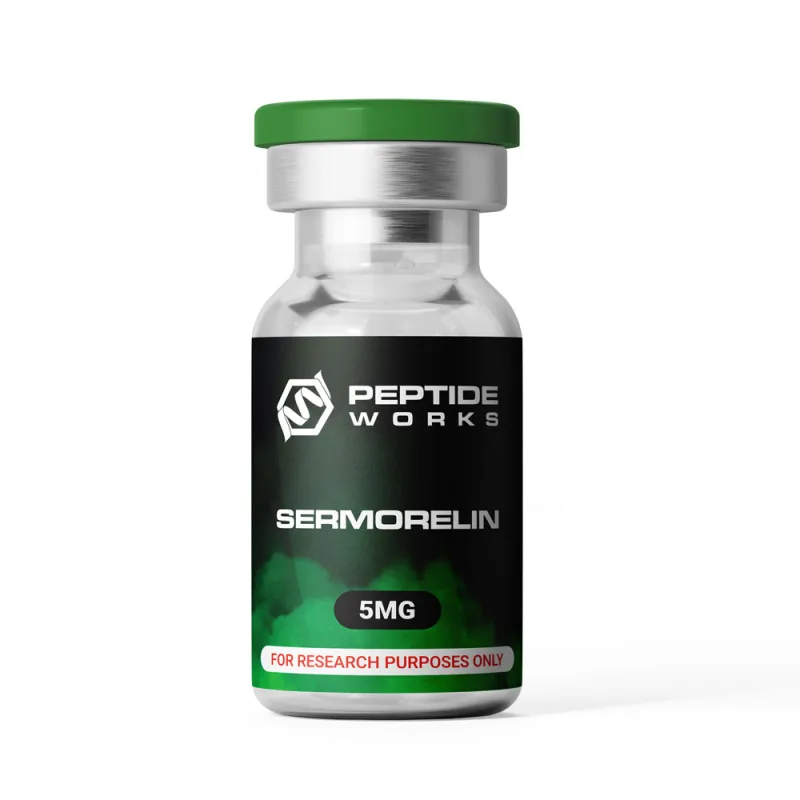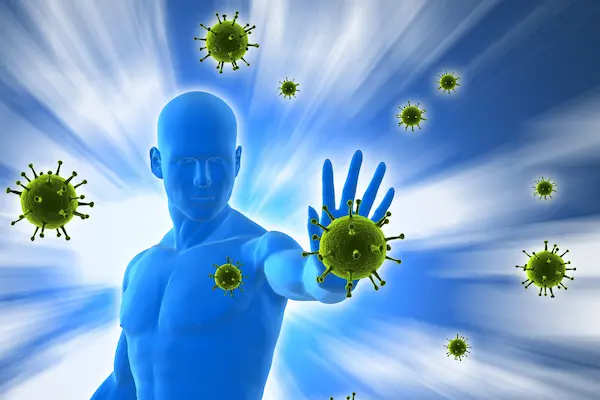
PROMO!
First order? Get 10% OFF with this code: 1storder

GH peptide research continues advancing rapidly as scientists study these synthetic compounds. Research shows both Ipamorelin and Sermorelin stimulate natural GH production through different pathways.
Studies indicate these peptides offer distinct advantages for research applications. Scientists examine how each GH peptide targets specific receptor mechanisms.
Peptide Works supplies high-quality research peptides worldwide, supporting scientific advancement. Understanding each compound’s unique characteristics helps researchers select appropriate peptides for their studies. Both peptides demonstrate promising results in growth hormone research.
Explore Ipamorelin from Peptide Works, a selective GH peptide that stimulates rapid growth hormone release without affecting cortisol or prolactin levels.

GH peptide activate specific receptors in your pituitary gland through targeted amino acid sequences. Ipamorelin binds to ghrelin receptors, creating selective growth hormone release without affecting cortisol levels.
Sermorelin mimics natural growth hormone-releasing hormone by targeting GHRH receptors directly. These growth hormone-releasing peptides (GHRPs) work as research tools by stimulating somatotropin production.
Laboratory studies show each GH peptide triggers different receptor pathways for controlled hormone secretion research.
Understanding the underlying mechanisms naturally leads to questions about selectivity especially why Ipamorelin is often highlighted for its focused action.
Ipamorelin works in a special way compared to other GH peptide options. It only targets ghrelin receptors in the body. This means it raises growth hormone levels without affecting cortisol or prolactin hormones.
Other peptides like GHRP-6 or GHRP-2 affect many different hormones at once. Ipamorelin’s focused action reduces unwanted side effects that happen with other peptides.
This selectivity makes Ipamorelin safer for longer study protocols without causing hormonal problems. CJC peptides work through different pathways, giving scientists more options for various study needs.
Having compared overall selectivity, the next step is to map out exactly which receptors each peptide influences and how that shapes their research use.
Try CJC-1295 from Peptide Works, a long-acting GH peptide that promotes prolonged growth hormone release for sustained effects.
Each GH peptide triggers growth-hormone release through a different receptor, giving researchers precise control over timing and intensity.
| Peptide | Primary Receptor | Release Pattern | Key Research Use |
|---|---|---|---|
| Ipamorelin | Ghrelin/GHS-R1a | Short, high-amplitude bursts without cortisol spillover | Fast GH spikes for acute recovery studies |
| Sermorelin | GHRH receptor (GHRHR) | Natural-style pulses that taper quickly | Physiologic rhythm studies, limited budgets |
| CJC-1295 (DAC) | GHRHR (long-acting) | Multi-day elevation via Drug Affinity Complex | Prolonged GH exposure for long-term repair |
Clarifying receptor targets makes it easier to appreciate the measurable outcomes researchers can expect in practical studies.
Research shows GH peptide improve muscle tone, increase lean mass, and reduce fat tissue. Ipamorelin selectively raises growth hormone without boosting cortisol levels, making it safer than other options.
Sermorelin stimulates natural hormone release through GHRH pathways but works slower than Ipamorelin. Research shows positive impacts on sleep patterns, energy metabolism, and recovery markers.
These peptides also influence skin health and metabolic function over time. Scientists often study timing of visible effects and potential side effects. Research indicates changes may appear within 4–8 weeks for body composition.
Knowing the potential benefits is only half the picture; a clear understanding of safety considerations is equally important.

Side effects of GH peptide can include mild injection-site reactions like redness or swelling. Ipamorelin may cause headaches or nausea but these happen rarely in research settings.
Sermorelin sometimes leads to dizziness, flushing, or sleepiness in test subjects. Severe allergic responses are uncommon but researchers should watch for breathing problems or rash. Joint discomfort and fluid retention have been noted in some research cases.
Monitoring side effects helps scientists adjust research conditions for better safety. CJC peptides show different side-effect patterns due to their longer action time.
Understanding safety profiles helps researchers choose the right peptide for their specific study needs. With benefits and risks outlined, a direct comparison of overall performance helps researchers decide which peptide best fits their protocol.
Discover Sermorelin from Peptide Works, a GHRH-mimicking peptide that promotes natural, pulsatile growth hormone release for physiologic research studies.
When choosing the best GH peptide for research, Ipamorelin, Sermorelin, and CJC peptides offer distinct benefits for different study needs.
Ipamorelin provides selective and quick growth hormone release with fewer side effects, making it ideal for controlled studies. Sermorelin mimics natural hormone patterns but acts slower than other options.
CJC peptides deliver longer-lasting effects with sustained GH releases over extended periods. Researchers select peptides based on specific study goals, desired release profiles, and safety requirements.
CJC peptides work best for prolonged GH elevation, while Ipamorelin suits rapid increases. Sermorelin is ideal for mimicking natural hormone cycles in research. Understanding these differences helps design more effective research protocols.
| Peptide | Release Speed | Duration | Side Effects | Best For Research Use |
|---|---|---|---|---|
| Ipamorelin | Rapid | Short-Moderate | Low | Quick GH bursts & clean studies |
| Sermorelin | Moderate | Short | Moderate | Natural GHRH cycle research |
| CJC | Sustained | Long | Variable | Extended GH elevation studies |
The future of GH peptide research looks promising for both Ipamorelin and Sermorelin. Scientists are developing improved versions that may lead to breakthroughs in age-related research.
Ipamorelin’s selective action could help researchers understand safer approaches with fewer complications. Sermorelin’s natural approach may help scientists develop therapies that work better with biological systems.
Advanced delivery methods could make these peptides more effective for research applications. Future studies may reveal new possibilities for supporting healthy aging research.
Peptide Works continues supporting this research by providing quality peptides to scientists worldwide.
Thank you for reading Ipamorelin vs. Sermorelin: Which GH Peptide is Right for You? from Peptide Works a reliable peptide supplier for research purposes online.
[1] Ghigo E, Arvat E, Muccioli G, Camanni F. Growth hormone-releasing peptides. Eur J Endocrinol. 1997 May;136(5):445-60.
[2] Sinha DK, Balasubramanian A, Tatem AJ, Rivera-Mirabal J, Yu J, Kovac J, Pastuszak AW, Lipshultz LI. Beyond the androgen receptor: the role of growth hormone secretagogues in the modern management of body composition in hypogonadal males. Transl Androl Urol. 2020 Mar;9(Suppl 2):S149-S159.
[3] Berlanga-Acosta J, Abreu-Cruz A, Herrera DGB, Mendoza-Marí Y, Rodríguez-Ulloa A, García-Ojalvo A, Falcón-Cama V, Hernández-Bernal F, Beichen Q, Guillén-Nieto G. Synthetic Growth Hormone-Releasing Peptides (GHRPs): A Historical Appraisal of the Evidences Supporting Their Cytoprotective Effects. Clin Med Insights Cardiol. 2017 Mar 2;11:1179546817694558.
[4] Prakash A, Goa KL. Sermorelin: a review of its use in the diagnosis and treatment of children with idiopathic growth hormone deficiency. BioDrugs. 1999 Aug;12(2):139-57.
ALL CONTENT AND PRODUCT INFORMATION AVAILABLE ON THIS WEBSITE IS FOR EDUCATIONAL PURPOSES ONLY.
DISCLAIMER: These products are intended solely as a research chemical only. This classification allows for their use only for research development and laboratory studies. The information available on our Peptide Works website: https://peptide-works.com/ is provided for educational purposes only. These products are not for human or animal use or consumption in any manner. Handling of these products should be limited to suitably qualified professionals. They are not to be classified as a drug, food, cosmetic, or medicinal product and must not be mislabelled or used as such.
Peptide Works
Related Articles

Could Orexin A peptide Treat Daytime Fatigue?
Waking up tired frustrates many people. Dragging through a full day with heavy eyes and slow focus makes work and

How can the Adamax Peptide help Chronic Inflammation?
Chronic inflammation acts like a fire that never stops burning. It slows recovery, drains energy, and blocks proper tissue repair.

Can Vitamin B12 Immune System Support Enhance the Effects of Thymosin Alpha-1?
The Vitamin B12 immune system link is important because this vitamin plays a crucial role in DNA synthesis, methylation, energy